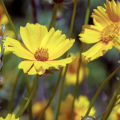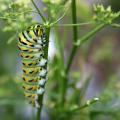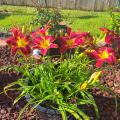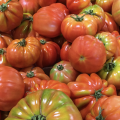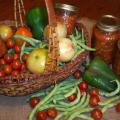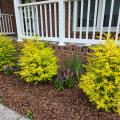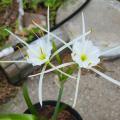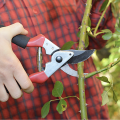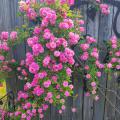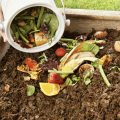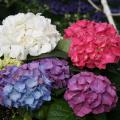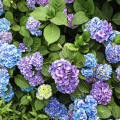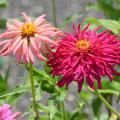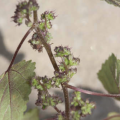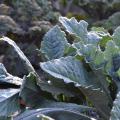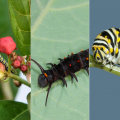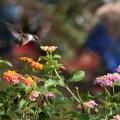News Filed Under Lawn and Garden
Native plants are great to have in the landscape because they often do not require watering, fertilization, or maintenance. They grow naturally in the region and are adapted to the overall climate and soil conditions. Native plants also provide food and shelter for wildlife and pollinators!
There is a lot of attention being paid to helping Monarch butterflies, and why not? These amazing insects are the only butterfly species known to have a migration pattern much like birds. Using environmental cues, they migrate south in the fall to overwintering grounds in Mexico. In the spring, they migrate north to breeding grounds all across North America.
Mississippi author, host and columnist Gary Bachman will be a featured guest in October at the 2022 Louisiana Book Festival presenting his book, “Southern Gardening All Year Round.”
Bachman is host of the Mississippi State University Extension Service’s Southern Gardening television show and author of the weekly Southern Gardening newspaper column.
May is one of my favorite months in the garden and landscape because so many plants are just starting to hit their stride. Bright-green, new foliage seems to be everywhere among my many hibiscuses and other flowering shrubs. One of my May favorites is the daylily.
Heirloom tomatoes have three distinct characteristics. Learn what makes them different from other kinds of tomatoes.
RAYMOND, Miss. -- Gardeners who want to preserve their abundant harvests by canning should make their list and check it twice -- now, before it’s time to begin canning. Home canners should be sure they have the right recipes and equipment for the foods they intend to preserve. They should also make sure they inspect all their equipment.
I visited my daughter who lives in Augusta, Georgia, during the Christmas holidays to help her landscape her new house. I thoroughly enjoyed our trip to the garden center, picking out great plants that would perform well in her landscape. The best of what we bought that day in December was the Sunshine Ligustrum.
One of the most confusing things when reading about plants in the landscape or talking to other gardeners about them is the use of common names. White it is understandable that we use common names -- remembering and using botanical Latin is hard -- it does lead to confusion. Some plants have two or more common names, and there are other instances where two different species have the same common name. For example, consider the common name, spider lily.
Pruning is one of the least understood gardening tasks and for good reason – it’s confusing. When, how, and if you should prune depends on the type of plant or tree you have and your goal for the plant.
There’s no plant more iconic in the springtime than azaleas. Their bright, colorful blooms are exactly what we need to welcome the warm weather after a dreary winter.
While many of my Northern gardening friends are still dealing with freezing temperatures, I spent this past weekend out in my coastal Mississippi landscape appreciating the fact that my tomatoes are planted and my roses are blooming.
It was the roses that really caught my attention. All of my rose plants are blooming their stems off, even though I missed the ideal pruning period of late January/early February. When I finally had time to prune, all the bushes were already pushing new growth, but the pruning still needed to be done.
Are you interested in starting a compost pile but aren’t quite sure where to start? Well, it’s an easy process, but it does require some patience. Here's how to do it.
Hydrangeas are among the most popular flowering shrubs in Mississippi and across the country. But when talking to home gardeners, it seems these beautiful shrubs are shrouded in mystery about how to care for them in the landscape.
Hydrangeas are a favorite among many Southerners. Their colorful blooms are a classic staple in many landscapes. They typically come in a variety of colors, including blue, purple, white, and pink. But did you know you can change the color of certain hydrangeas? With a little work and a lot of patience, you can change the color of bigleaf and mountain hydrangeas by adjusting the soil pH. How cool is that?!
I’ve had quite a few things going on this spring, and I’ve come to the decision that I should try to make my garden and landscape a little bit less intensive. Like that is actually going to happen, but I’m going to give it a try.
With warm weather arriving, many people are starting to think about their landscape plan for the spring and summer. It’s so exciting to get those colorful flowers planted. But with warmer weather, we also get unwanted, pesky weeds. It’s inevitable to have some type of weed pop up in your flower beds, gardens, or lawn at some point during the summer.
I think every gardener -- whether just starting out or a seasoned veteran -- has heard many an old adage related to growing a garden. Most of the gardening folklore revolves around the “best” planting times for various vegetable crops.
I spent time outside this weekend enjoying my landscape and garden and trying to get caught up with late-winter/early-spring pruning. I spent a couple of hours in my citrus grove marveling that I can grow such a variety of these delicious fruit trees.
I’ve found that most years, there seems to be a difference in flowering among the trees. I’ve thought that maybe citrus will get into the alternate bearing pattern that is so common in the live oaks here on the Mississippi Gulf Coast.
Butterflies aren’t just beautiful. They are important pollinators for wildflowers and woody plants. But before they transform into the colorful, winged adults you see fluttering around your landscape, they are caterpillars hatched from eggs. Mississippi is home to more than 50 species of butterflies. Have you seen any of these three common butterfly caterpillars in your yard?
It is officially spring, so we can start to get serious about our gardens and landscapes. But this is also the time we enjoy the annual, northward migration of hummingbirds. That means we need to start thinking about plants that will attract hummingbirds to our landscapes.

